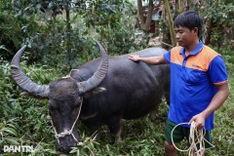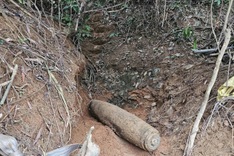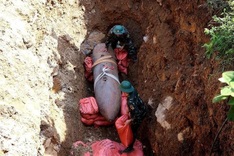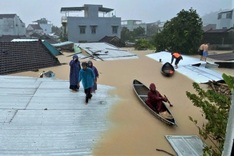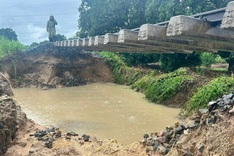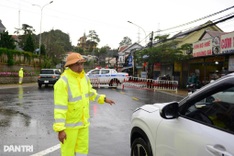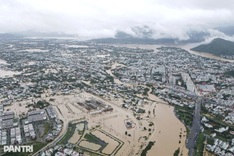Following a local guide, we came to Pa Co Commune in Mai Chau District, Hoa Binh Province on a hot and muggy summer morning last week.
 |
| A village of Mong People in Pa Co. |
 |
| A Mong boy is saying hello to visitors |
 |
| This young girl is sewing colourful scarves and dresses. |
It was only 7.30am but the sun was already starting to burn in Mai Chau Town where the weather is normally much cooler than Hanoi. “Don’t worry, we’ll come to a cool haven today,” our guide said, urging us onto the shuttle bus.
The 30-seat bus rolled slowly up and down the smooth but winding road through Mai Chau Town. We passed many green gardens and rice fields on both sides before entering a rocky area with small springs and waterfalls.
“We are arriving at Pa Co,” the young local guide said, “Do you want to get off and walk to enjoy the sights and cool air?”
Seeing the blazing sun outside, myself and some other Vietnamese girls hesitated but the excitement and cheerful faces of other foreign travelers while exploring the scenery and taking photographs finally urged us to get out of our seats.
To our surprise, we seemed to have escaped to some celestial cooler climate in just 45 minutes! The sun was still shining brightly but it could not compete against the fresh and cool wind from the corn fields or the tea and plum gardens surrounding us. We breathed in the fresh air and sighed with relief.
Pa Co is the furthest commune of Mai Chau District in the northwest of Hoa Binh Province, bordering Son La Province’s Moc Chau District. The green, peaceful oasis sits on an area which is nearly 1,000 metres above sea level. This altitude offers Pa Co a really cool climate in the summer.
“Just two decades ago, this place was famous for its vast poppy fields and drug smugglers,” said the tour guide, adding, “But things have changed dramatically following the Government policies since 1993 which encouraged local people to fell the poppy and grow tea, corn, and plum. The poppy fields have now turned to verdant plum and peach gardens or immense corn and tea fields as you can see”.
“And thanks to the transformation, Pa Co is now becoming a beautiful plateau which attracts more and more tourists who wish to discover the culture and lifestyle of the local Mong people,” he added.
We then stopped at Tra Day Tea Factory, established by a local man named Pha. After enjoying Shan Tuyet tea (made from old tea plants grown on the high mountains), we were taken by Mr. Pha to visit the tea gardens.
“This tree is more than a hundred years old,” he pointed to a very high tea tree. “All the others in this garden are approximately that age. Our ancestors have grown tea all over the mountains here but many of them were destroyed to grow poppies. Now we have only about 1,000 old trees left.”
Now tea is becoming one of the specialties that Pa Co has to offer to tourists as well as neighbouring communes. Thanks to this specialty, the life of more than 400 local Mong households is getting better.
We met Sung A Lu, a local patriarch in a garden. Lu told us that tea was now their most valuable property. “It is bringing us a healthy and prosperous life,” he said. Lu also added that revenue from tea is making up one third of local people’s total income.
Taking a walk around the beautiful Tra Day Village was really a nice experience. It is a large valley surrounded by mountains and hills where people live very close to one another. We were greeted by friendly smiles along the way and a lot of “hellos” were sent from the small windows and doors. A group of boys playing on the road, a young girl weaving scarves near her door, an old man growing vegetables in his small garden - all of them painted a beautiful and lively picture of the peaceful way of life here. Stopping at a house, we were invited by its owner to have some peaches and boiled corn. Once, I was told, visitors would be invited to try some opium. Things have changed.
The local rustic Mong people are still finding tourism a really new concept. There is no house or service designed for tourists. Yet the green peaceful oasis has been discovered by some travel companies as well as backpackers.
Now you can add Pa Co next to Lac or Pom Coong villages when you come to explore the stunning natural beauty and local ethnic people’s rich culture of Hoa Binh Province.
How to get there:
-By motorbike or car. It takes about 4 hours from Hanoi, following National Road No.6.
- Home-stay service has not developed yet, but it is an ideal place for 1-day picnic with lunch on top of the hill.

